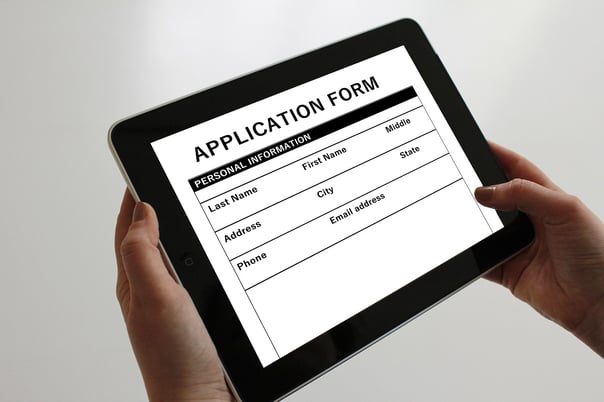
You might have heard that getting into college is more competitive than ever. Students are applying to college in ever greater numbers, and many apply to multiple colleges, making the pool of applications even deeper.
As a result, you are likely looking for anything that will help you edge out the competition. Your counselors or friends might have suggested applying early action or early decision to increase your chances of being accepted. But does applying early raise the odds of being accepted to the college of your choice?
While not all schools offer these options, about 450 colleges across the U.S. offer one or both early admission option, according to College Board. Many popular and competitive colleges fall into this category, offering one or the other, or both. Read on for an explanation of how early decision and early action work, and whether or not they increase your chances for admission.
What Is the Difference Between Early Decision and Early Action?
While early decision and early action share many characteristics, they have some important differences you need to understand before making a decision.
What Is Early Decision?
Most school deadlines for early decision fall in November, earlier than the regular admissions December deadline or rolling admissions that allow you to apply any time. That early deadline serves a purpose: it’s meant to attract students who know they want to attend that school.
Early decision students are stating something even stronger, though. When you apply early decision, you make an agreement that if the college chooses to admit you, you will accept their offer and withdraw any other applications you might have sent out to other colleges.
In other words, early decision is binding – when you choose this early application method, you are committing to follow through and attend the school. It is a breach of ethics to “change your mind,” so applying early decision is not to be taken lightly.
For that reason, you may only apply early decision to one college – clearly, that college should be your number one choice. You can apply to as many other schools as you like, as long as you withdraw them if accepted to your number one school.
What Is Early Action?
Early action is less restrictive than early decision and is non-binding. If the college accepts you, you may choose to attend or not. You may apply to any number of colleges and take all of them into consideration before you make your final decision as to which you’ll accept.
You may also apply early action to as many colleges as you like. These applications are usually due in November, and most students know their status before they go on winter break, so notifications come quickly.
What Are the Acceptance Rates for Early Applications?
Now that you know the difference between early decision and early action, the next question is whether either is worth doing. Do you have a better chance of being accepted if you make it clear to the college that it is your top pick? Are the odds in your favor if you apply earlier than most other students?
It turns out that they are. Yes, early application does increase your odds of being accepted, assuming you are a qualified student. There are a few reasons for this, so let’s take a look at some college admissions rates and how early application affects them. However, it’s important to note that every college is different, and that you will need to research the colleges of your choice to determine what they offer for early admission.
Harvard University has an early decision option – remember, this is the binding agreement that you will attend if accepted. For its class of 2027, the Harvard acceptance rate for early decision was 7.6 percent. This may not seem like a good number, but in comparison to its average admission rate, it is! Harvard admits only 2.6 percent of all students applying regular admission. That means that Harvard accepts 3 times more applicants through early decision than it does through regular admission.
The University of Virginia offers both early decision and early action. This school also favors early applications, but preference is given to those applying early decision. UVA’s rate of acceptance for regular applications is 13.4 percent. Their acceptance for early action is slightly higher at 16.6 percent and considerably higher for early decision at 24.4 percent! So at UVA, you are almost twice as likely to be accepted when you apply early decision, versus applying regular decision.
Auburn University offers early action, but not early decision. As we’ve discussed, if accepted early action, you are not bound to attend that school. Auburn does not report its acceptance rate percentage for each category, but 44 percent of all Auburn’s accepted applicants apply early action. That means nearly half of all Auburn admission slots are taken by early action applicants.
Offering both early decision and early action, Virginia Tech’s acceptance rate shows that, like Auburn, almost half its freshman class is selected through early admissions. Virginia Tech has an early decision acceptance rate of 46% and an early action rate of 14%. 56 percent of regular decision applicants are accepted.
Before we get into what all this means to you, it’s important to make a couple key points. First, no matter when you apply, colleges won’t admit students who don’t meet their requirements. You must be a competitive candidate to be accepted – merely be willing to commit early won’t win them over. But if you have what it takes, and you show demonstrated interest by applying early, it can really help your chances.
Demonstrated interest matters because it looks very good to a school’s statistics when a high number of accepted applicants choose to attend. The school can then report that 95 percent of the students they accepted chose to attend, for example. Since early decision is your statement that you will indeed attend their school, they are more likely to admit you, assuming that you are qualified.
And if you show demonstrated interest by applying early, it’s a good indicator to them that you are serious about attending and more likely to accept an offer. The slight advantage in applying early action is a reflection of their confidence that you are serious about wanting to be there.
Does Applying Early Decision or Early Action Increase My Chances of Being Accepted?
Using the examples above that represent a range of universities from highly selective to somewhat selective, we can deduce that there is an advantage to applying early. We can see that early decision, which is binding, is most beneficial to increasing your chances for admission. Early action does seem to improve your chances of being accepted, but not as significantly as early decision.
Keep in mind that these decisions also vary from school to school. Some value early action more than others. We encourage you to do exactly what we did – research the school acceptance rate for early application and compare it to the acceptance rate for regular application. You may also call an admissions counselor at your school of choice and ask them directly if it would benefit you to apply early. They will be honest about how their school views early applications. Once you’ve done your research, you can then ask yourself if it’s worth it to you to apply early.
Whatever you do, don’t mistakenly believe that applying early is a guarantee you’ll be admitted. Remember that by applying early you will be competing against some of the most qualified and committed students in the application pool, and the statistics reflect that. Each school is still going to select the best of all applicants and reject or defer other applications. If you are deferred, your application will then be considered again during regular application review.
How Do I Know If I Should Apply Early?
Now that we’ve determined that qualified students who apply early decision or early action do seem to have a better chance of being accepted, how do you know if you’re a “qualified student?” And if you know you want to apply early, should you choose early decision or early action?
Apply Early Decision If…
- You’re sure you’ve found your best-fit school. There are several ways you can determine this, including gathering as much information as you can about all aspects of student life, academics, and resources available. And we can’t stress enough the importance of a visit before applying early decision. Remember, this is binding, so you can’t change your mind if you find your first visit disappointing after accepting the offer. If you’re the type of person who likes to keep all their options open, early decision is probably not the best idea for you.
- You know this is the school you want to attend. It can’t be one of several, it must be THE one. You must be willing to walk away from every other school that might interest you if accepted to this one.
- You’re a strong candidate for admission. You have read through all the requirements for admission and meet or exceed these requirements. It’s not going to help your cause to pay your application fee and apply early just to be rejected because you don’t meet the basic qualifications. Now, applying to a reach school is perfectly fine. It just shouldn’t be the one school you choose to apply to early decision.
- You can afford the tuition. If you’ve researched the costs of attending college, you know that they vary widely, and are never cheap. Part of your research should always include the cost to attend – that includes tuition, room and board, student fees, and so on. While many schools offer attractive scholarship packages, these also vary, not only by school but by student. Be sure you know the average scholarship award and that you or your parents are able to pay the difference in tuition. And be sure you’re okay with whatever that may be. If another school comes along and offers you a better scholarship package after you’ve already accepted, you can’t change your mind.
Apply Early Action If…
- You want to send the message to specific schools that they are at the top of your list. Applying early is one way of showing demonstrated interest in a school, of letting them know that you’ve checked them out and like them enough to apply early.
- You want to save time and money. If you apply early to one or a few top schools, you will receive acceptances early as well. If you’re accepted and are able to settle on a school by December, you no longer need to spend time and money applying to additional schools.
- You want to alleviate the pressure of senior year. If you apply and are accepted early action, you can relax and just enjoy the final semester of your senior year. You can also get a jump start on all things college, including courses, roommates, and additional scholarships, all while other students are still waiting to find out if they’ve been admitted.
To sum up: If you have a clear, favorite school that you can afford, you meet that school’s requirements, and you don’t feel the need to field multiple offers, early decision may increase your chances of acceptance. Early action should be viewed more as an opportunity to receive an acceptance earlier, and it may or may not increase your chances, depending on the school. If you want to apply early decision or early action, be sure to apply to other colleges as well. If you cover all your bases, your chances of getting into the perfect school for you will improve.

Want to build the best possible college application?
We can help. PrepScholar Admissions is the world’s best admissions consulting service. We combine world-class admissions counselors with our data-driven, proprietary admissions strategies. We’ve overseen thousands of students get into their top choice schools, from state colleges to the Ivy League.
We know what kinds of students colleges want to admit. We want to get you admitted to your dream schools.
Learn more about PrepScholar Admissions to maximize your chance of getting in.

Source: blog.prepscholar.com
